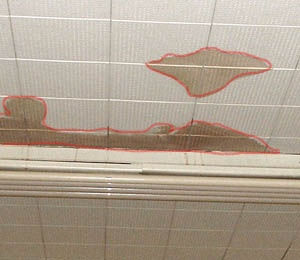Protecting Your Collections from Water Damage
- Muse Curatorial
- Dec 31, 2019
- 2 min read

The scary truth is that all of us have had to deal with or WILL deal with some sort of natural disaster hitting our collections. From earthquakes to fires to floods, anything can happen at any moment, and the best thing you can do for your museum is to be prepared. There are 3 steps I always suggest to our clients: 1) ANTICIPATE scenarios for each type of disaster. This includes setting aside money in your budget each year for possible repairs/conservation or consultants. 2) PREPARE. Bring in a company to assess your building and collection spaces; create a disaster plan for each space and type of collection; and train your employees/volunteers. 3) IMPLEMENT. Secure your objects BEFORE disaster strikes!
This week I'd like to focus briefly on protecting your objects against water damage from floods, rain, leaks, a rogue sprinkler system, anything! There are several scenarios that could be the catalyst for water damage: Many of our buildings are older and may have had issues with previous leaks in the ceilings or walls, and they may not have been fixed very well. Or, the fire alarm sounds and sets off the sprinkler system in the collections spaces. Perhaps there is a heavy rain, which causes spaces to flood, or, if your space is underground, the poor drainage system causes water to seep into the ground and leak through your ceiling. I have also seen a broken lawn sprinkler system be the culprit for a leak in a an outside wall, which was one of the walls of a collections space. So what can you do to prepare for these types of issues?
For starters, raise all shelving systems. There shouldn't be any objects on the floor, and shelving should be raised so that the first shelf has less of a chance of being affected by minor flooding. Second, consider covering the cabinets with plastic sheeting in case the sprinklers go off or there is a leak in the ceiling. In older ceilings, the tiles may have water marks on them from previous leaks. If this is the case, I would take a red marker and outline the water mark so you can monitor it. If the water mark goes outside the red marker, then you know you still have a leak. And don't forget to maintain a good temperature and relative humidity level in all spaces, because if there is moisture, you have the potential to have a whole new problem on your hands...MOLD!
There are as many ways to protect objects as there are different types of objects to protect. So if you have a question on one of yours, please don't hesitate to call us today for a free consultation! (800) 715-8804

-01.png)
Comentários